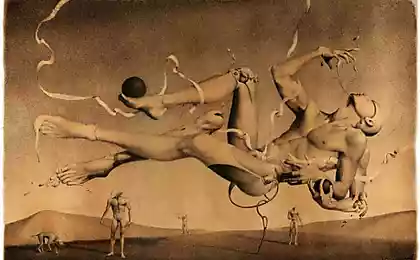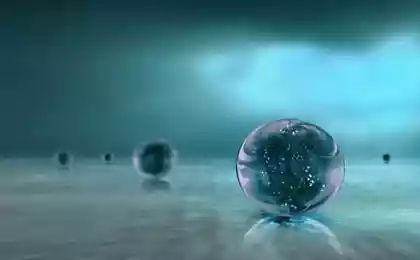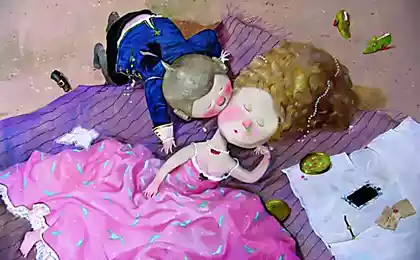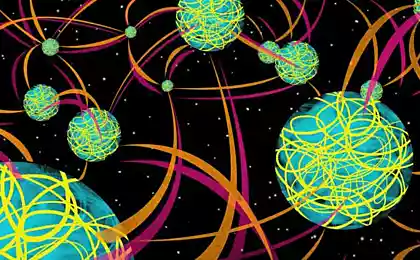6671
Body Worlds exhibition - art or mockery?
"Body Worlds" - a traveling exhibition, where on display are exposed human remains (bodies of all or individual organs), passed a special treatment that ensures their long-term preservation. Creator of the now famous exhibition is a German anatomist Gunther von Hagens, the developer of the process of plastination - the very method that allows for a very long time to keep the dead bodies. (Note: The materials presented in this photonews may seem unpleasant or scary!)
1. In plastination water and fat contained in the body, particularly plastic substituted (latex may be used, polyester and various special rubber). Treated this way the body is called "plastinatom."
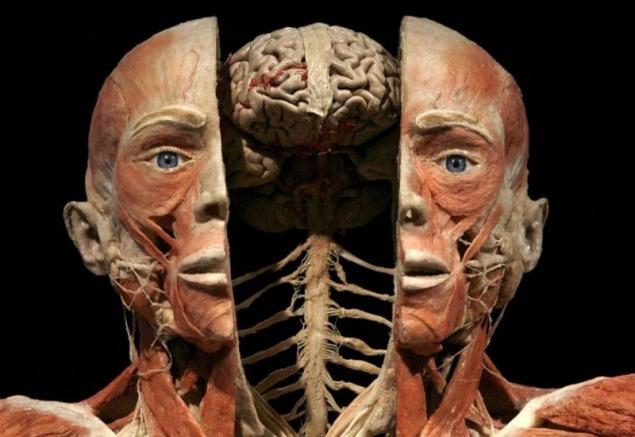
2. Plastinat does not rot, does not publish putrid smell, it can be touched. Plastination is maintained even when the cell structure and topography of the dead tissues of the body.
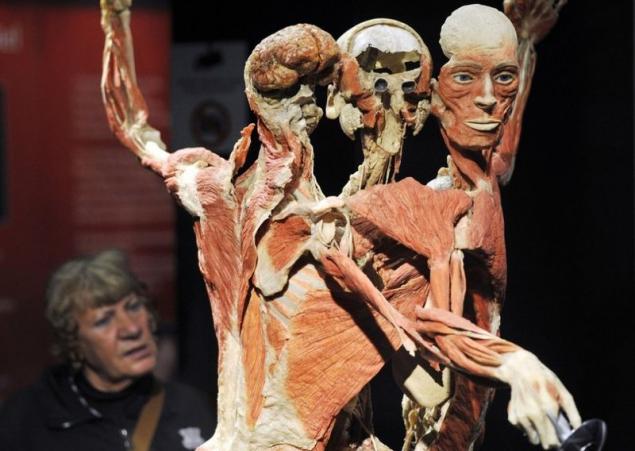
3. Sam Gunther von Hagens says he accidentally discovered a method of plastination. In 1977 he worked as an assistant in the Anatomical Institute of the University of Heidelberg, and when he watched the manufacturer of anatomical preparations, he got the idea to not fill their polymer, and the polymer is pumped inside.
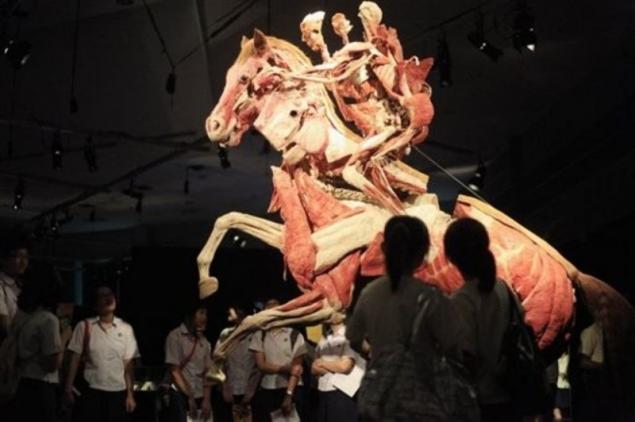
4. The first patent for his invention of Gunther von Hagens has received in 1979. Since then he has further improved its method, and today plastination allows you to get the most durable anatomical specimens.
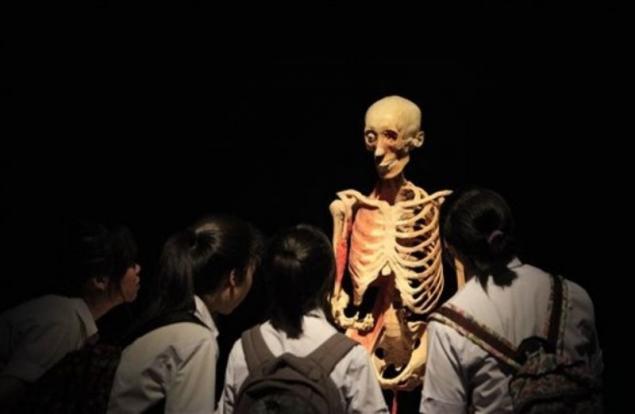
5. As the scientific method plastination enjoyed such success that it has allowed Gunther von Hagens founded in 1993 his own Institute of Plastination. At first, this institution was engaged only in the manufacture of unique teaching aids for medical schools. However, it was soon developed equipment, whereby it was possible to not only expose Plastination small samples, and the whole body (for manufacturing such plastinata requires 1,500 hours).
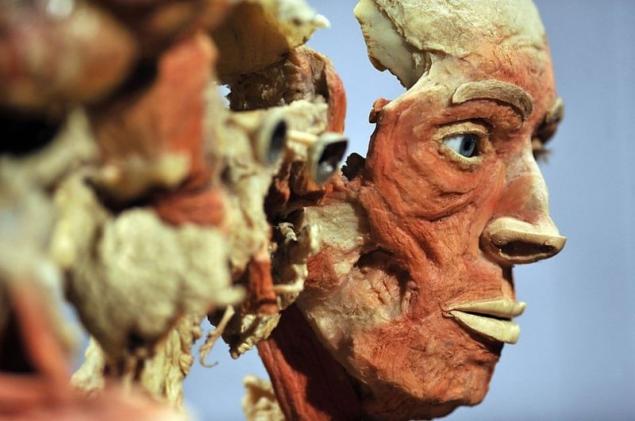
6. And the first exhibition processed so dead held in Tokyo in 1995. The exhibition aroused great interest, it was visited by more than three million viewers, and, of course, a mixed reaction from the public.
7. Of course, if for such an exhibition be used only synthetic materials, it would be possible to speak about its ideological side and the skill of the sculptors. But here as a museum exhibit uses real human body, and it is not used in some purely scientific purposes, but simply on display. This is, after all, is very similar to some high-tech mockery of corpses.
8. For the next two years, Gunther von Hagens has organized the work of its scandalously famous exhibition "Body Worlds", which exhibited the body of humans and animals, transformed into plastinaty. Body skinned people have been installed in the living poses many body with cut into several strips such that the internal structure was visible.
9. For the production of exhibits exhibitions "Body Worlds" Gunther von Hagens has hired 340 professionals working in five laboratories located in four different countries. The most difficult part in making the giraffe exhibit was offered for "Worlds body 3". For its production took three years of work - this is ten times greater than that required for the production of an exhibit of human corpses.
10. Position the artistic director of exhibitions "Body Worlds" takes Angelina Valley (Angelina Whalley) - Gunther von Hagens wife. Gunther von Hagens says his goal is to create a "Museum of Man", where she worked to a permanent exhibition dedicated to the human anatomy.
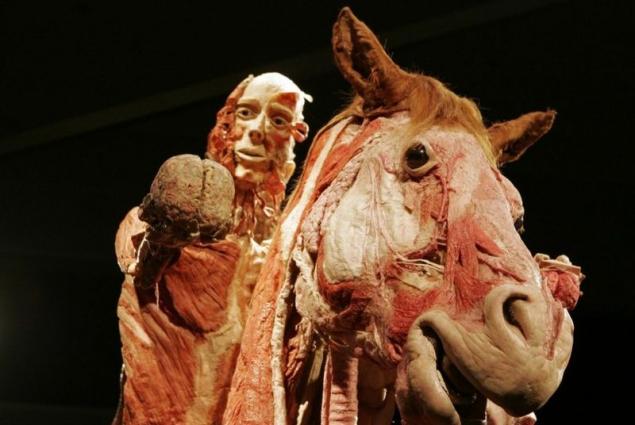
11. It is alleged that plastinatov, is exhibiting the human body as a whole, the body used exclusively voluntary donors who bequeathed for this purpose their bodies. In the donor program are eligible to participate only people over 18 years of age, have expressed their consent in writing.
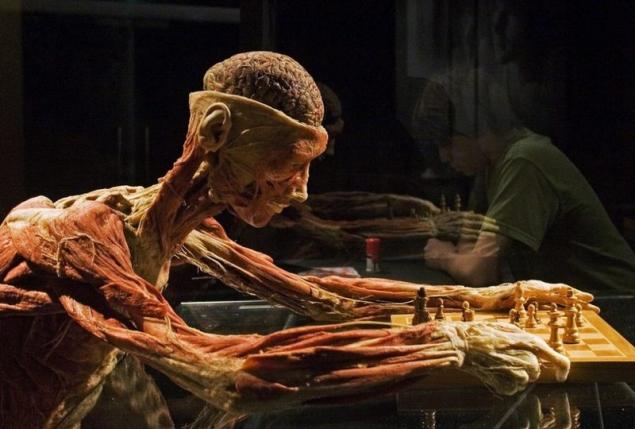
12. Gunther von Hagens also asserts that the exhibits he did not use any dead bodies from hospitals in Kyrgyzstan, nor the bodies of executed Chinese prisoners. Von Hagens even sued the German magazine "Der Spiegel", which disseminate information that "Doctor Death" asked Chinese bodies of those executed for their exhibitions. Von Hagens said that the origin of the bodies he did not know anything, and that he returned seven corpses in China.
13. In October 2003 Parliamentary Commission of Kyrgyzstan led investigation into the charges against Hagens charges that he illegally, and even without notifying relatives of the deceased, brought several hundred bodies from prisons and hospitals in Kyrgyzstan. But Hagens replied that he had received only nine bodies, and that these bodies are not used as exhibits in the exhibition.
14. Today, a lot of people willing to bequeath their bodies exhibition Gunther von Hagens. In Germany alone there are more than nine thousand.
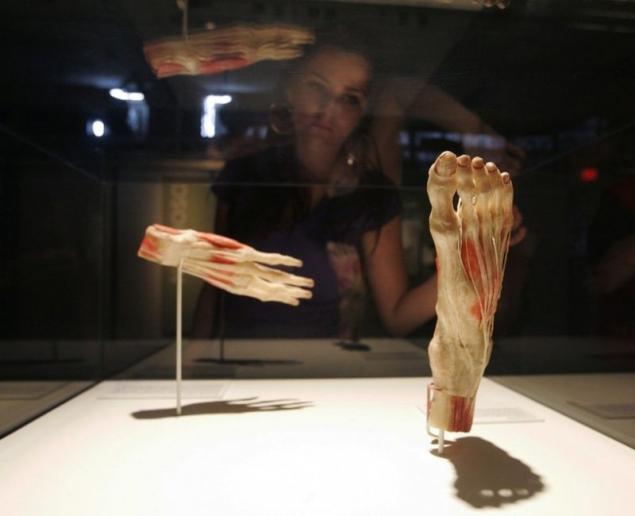
15. Sam doctor Hagens also bequeathed his body to the museum. After the death of his body should cut it on the plate and distribute the finest in various medical institutions.
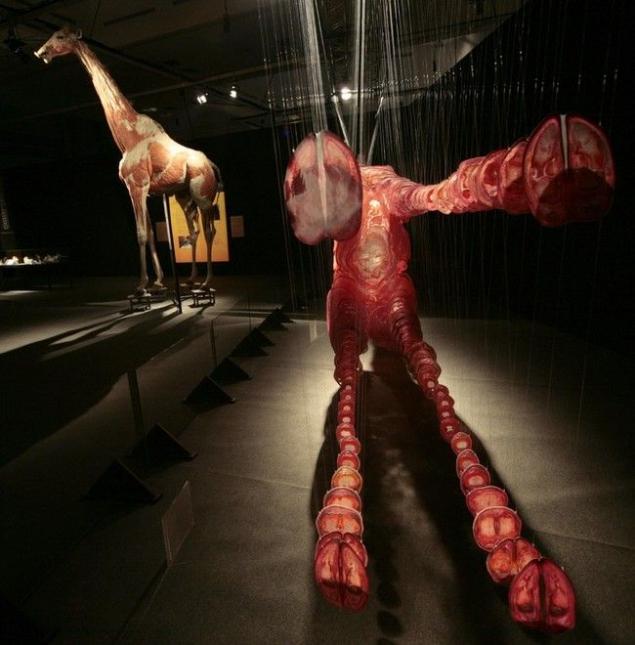
16. In the words of the doctor himself (pictured), after death, he will continue to teach anatomy at several universities, which he could not do in life.
1. In plastination water and fat contained in the body, particularly plastic substituted (latex may be used, polyester and various special rubber). Treated this way the body is called "plastinatom."

2. Plastinat does not rot, does not publish putrid smell, it can be touched. Plastination is maintained even when the cell structure and topography of the dead tissues of the body.

3. Sam Gunther von Hagens says he accidentally discovered a method of plastination. In 1977 he worked as an assistant in the Anatomical Institute of the University of Heidelberg, and when he watched the manufacturer of anatomical preparations, he got the idea to not fill their polymer, and the polymer is pumped inside.

4. The first patent for his invention of Gunther von Hagens has received in 1979. Since then he has further improved its method, and today plastination allows you to get the most durable anatomical specimens.

5. As the scientific method plastination enjoyed such success that it has allowed Gunther von Hagens founded in 1993 his own Institute of Plastination. At first, this institution was engaged only in the manufacture of unique teaching aids for medical schools. However, it was soon developed equipment, whereby it was possible to not only expose Plastination small samples, and the whole body (for manufacturing such plastinata requires 1,500 hours).

6. And the first exhibition processed so dead held in Tokyo in 1995. The exhibition aroused great interest, it was visited by more than three million viewers, and, of course, a mixed reaction from the public.
7. Of course, if for such an exhibition be used only synthetic materials, it would be possible to speak about its ideological side and the skill of the sculptors. But here as a museum exhibit uses real human body, and it is not used in some purely scientific purposes, but simply on display. This is, after all, is very similar to some high-tech mockery of corpses.
8. For the next two years, Gunther von Hagens has organized the work of its scandalously famous exhibition "Body Worlds", which exhibited the body of humans and animals, transformed into plastinaty. Body skinned people have been installed in the living poses many body with cut into several strips such that the internal structure was visible.
9. For the production of exhibits exhibitions "Body Worlds" Gunther von Hagens has hired 340 professionals working in five laboratories located in four different countries. The most difficult part in making the giraffe exhibit was offered for "Worlds body 3". For its production took three years of work - this is ten times greater than that required for the production of an exhibit of human corpses.
10. Position the artistic director of exhibitions "Body Worlds" takes Angelina Valley (Angelina Whalley) - Gunther von Hagens wife. Gunther von Hagens says his goal is to create a "Museum of Man", where she worked to a permanent exhibition dedicated to the human anatomy.

11. It is alleged that plastinatov, is exhibiting the human body as a whole, the body used exclusively voluntary donors who bequeathed for this purpose their bodies. In the donor program are eligible to participate only people over 18 years of age, have expressed their consent in writing.

12. Gunther von Hagens also asserts that the exhibits he did not use any dead bodies from hospitals in Kyrgyzstan, nor the bodies of executed Chinese prisoners. Von Hagens even sued the German magazine "Der Spiegel", which disseminate information that "Doctor Death" asked Chinese bodies of those executed for their exhibitions. Von Hagens said that the origin of the bodies he did not know anything, and that he returned seven corpses in China.
13. In October 2003 Parliamentary Commission of Kyrgyzstan led investigation into the charges against Hagens charges that he illegally, and even without notifying relatives of the deceased, brought several hundred bodies from prisons and hospitals in Kyrgyzstan. But Hagens replied that he had received only nine bodies, and that these bodies are not used as exhibits in the exhibition.
14. Today, a lot of people willing to bequeath their bodies exhibition Gunther von Hagens. In Germany alone there are more than nine thousand.

15. Sam doctor Hagens also bequeathed his body to the museum. After the death of his body should cut it on the plate and distribute the finest in various medical institutions.

16. In the words of the doctor himself (pictured), after death, he will continue to teach anatomy at several universities, which he could not do in life.







